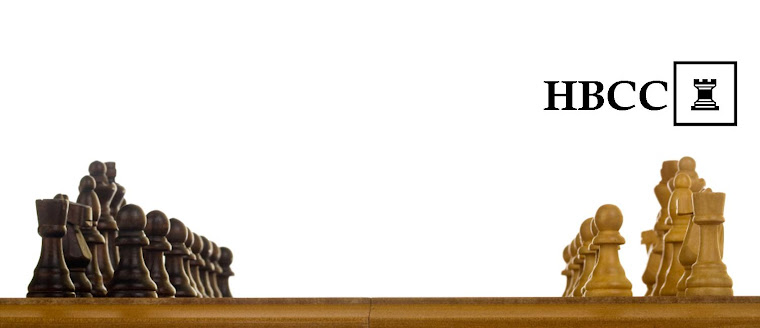Unfortunately, the law is rather crude and needs further legislation in order to be enforced with any degree of reliability. For example, in the end game pawns assume a much greater value than they do in the earlier stages of the game as they have the opportunity to promote to a queen. Every pawn therefore has a potential value of 9 points and this dynamic can create chaos when it comes to assessing the merits of a position. One moment a pawn isworth 1 point, the next it is worth 9. How can this happen? Examine the evidence below if you will.
Case A – “Pieces are worth more than pawns”
 It is black to play in this position. A cursory assessment of the situation suggests that, although the material held by the two sides is equal, positionally, white is rather better. His knight is more active than black's passive bishop and black's doubled c-pawns are a potential weakness. Unfortunately they are also potential queens and black exploits this in a rather elegant fashion by playing...
It is black to play in this position. A cursory assessment of the situation suggests that, although the material held by the two sides is equal, positionally, white is rather better. His knight is more active than black's passive bishop and black's doubled c-pawns are a potential weakness. Unfortunately they are also potential queens and black exploits this in a rather elegant fashion by playing...1. ... Rxb2!
Black is sacrificing his rook, but, in the process the value of his pawn on c4 has just increased as it is now a passed pawn.
2.Nxb2 c3
Already white finds himself in a spot of bother as, in order to stop the pawn he must play 3.Nd3. Sadly this will be met with 3....c4+ 4.Kf1 (4.Rxb6 cxd3 is winning for black) cxd3 5.Ke1 c2 6.Kd2 Be3+ sacrificing the other piece in order to promote his c-pawn which has suddenly assumed a 9 point value! In order to continue white must give back the exchange by playing...
3.Rxb6 c4!!
A truly stunning reposte! Black isn't interested in regaining the rook. All that matters is queening the c-pawn and in order to do that he must prevent the white knight getting to d3 which he would suceed in doing after 3...axb6 4.Nd3. A purely material assessment of the position now shows that white is 8 points (Rook = 5 and Knight = 3) ahead but of course black's pawn on c3 is worth a lot more than 1 point right now.
4.Rb4 ...
 This is white's only hope right now as if 4.Rc6 then cxb2 will get the pawn home on the b-file. Now if black takes the knight with 4...cxb2 then 5.Rxb2 and if 4...c2 then 5.Rxc4 and white stops the pawn. Black therefore declines to regain the material once again.
This is white's only hope right now as if 4.Rc6 then cxb2 will get the pawn home on the b-file. Now if black takes the knight with 4...cxb2 then 5.Rxb2 and if 4...c2 then 5.Rxc4 and white stops the pawn. Black therefore declines to regain the material once again.
4. ... a5!
The coup de grace!
5.Rxb4 cxb2
With b4 and c1 unavailable to white's rook black's pawn can't be stopped and has achieved its maximum potential value therefore white resigned.
Of course the evidence this game provides is a rather melodramatic, if exceedingly elegant means of disrupting the accepted order. Never the less it surely proves that a simplistic and rigid application of piece values is destined to get players into trouble. I would therefore recommend that the following amendments be made the law we are examining today.
Suggested amendments to the “Pieces are worth more than pawns” rule
- Pawns have a dynamic value that ranges between 1 and 9
- The longer a game continues the greater each pawn’s potential value become
- The closer a pawn comes to its queening square the greater its value become
- Pieces only retain their value over pawns if they can prevent a pawn from queening without sacrificing themselves
I believe there are further amendments to laws about the relative value of pieces that must be considered but let us adjourn today’s proceedings and continue this discussion another time.

